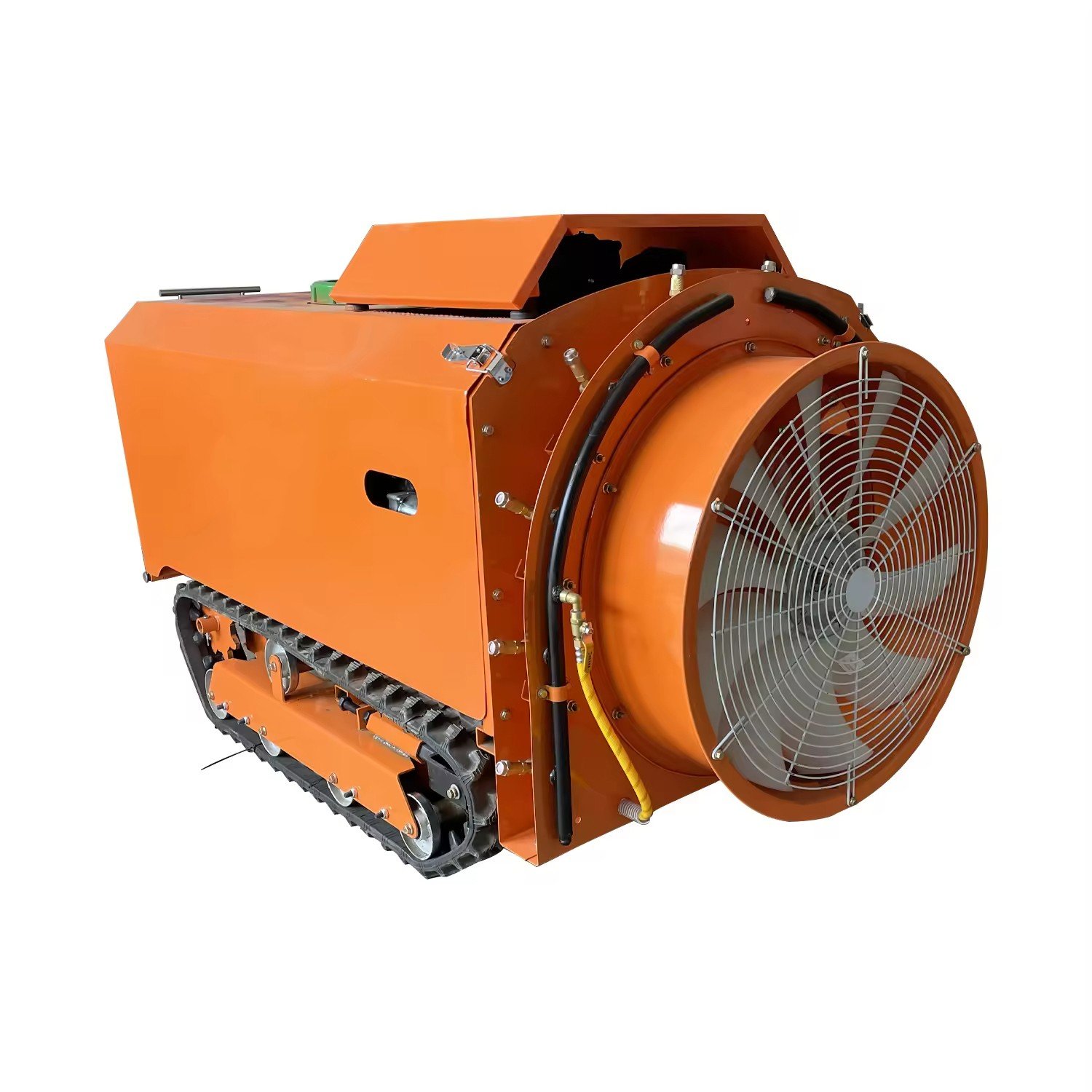

In the wave of agricultural modernization, the remote-controlled sprayer has emerged as a "new weapon" in global agricultural production due to its high efficiency, precision, and safety. This advanced equipment not only greatly improves agricultural productivity but also plays a significant role in environmental protection and sustainable development.
The remote-controlled sprayer integrates a variety of advanced technologies, making it highly effective in agricultural production. Its main technical features include:
High-Efficiency Operation
The remote-controlled sprayer uses a tracked drive system, which offers excellent mobility and stability, allowing it to easily handle complex terrains such as muddy fields and slopes. This design not only enhances the equipment's adaptability but also reduces the uneven spraying caused by uneven terrain. The larger tank capacity reduces the frequency of refilling, further improving operational efficiency, especially in large-scale farmlands.
Precision Spraying
With advanced spraying systems and video monitoring, operators can adjust spraying parameters in real-time to ensure that the pesticide is evenly applied to the crops, enhancing control effectiveness. This precision spraying not only improves pesticide utilization but also reduces environmental pollution. Moreover, the intelligent control system can automatically adjust the angle and flow of the nozzles based on the height and density of the crops, further enhancing spraying accuracy.
High Safety
Remote operation avoids direct contact between operators and pesticides, reducing the risk of pesticide poisoning. At the same time, the video monitoring system can monitor the equipment's working status and surrounding environment in real-time, preventing collisions or overturning accidents. This is of great significance to the health and safety of operators, especially when dealing with highly toxic and corrosive pesticides.
Strong Adaptability
The remote-controlled sprayer is suitable for a variety of agricultural scenarios, including large-scale farmlands, orchards, tea gardens, and small-scale vegetable gardens. Its flexible nozzles and drive system can be adjusted according to different crops and terrains to ensure optimal performance. For example, in orchards, the equipment can easily meet the spraying needs of tall fruit trees, avoiding the dangers of manual climbing. In vegetable gardens, its precision spraying ability can effectively protect crops and reduce pesticide residues.
In recent years, the level of agricultural mechanization has been continuously improving worldwide, and the demand for efficient and environmentally friendly agricultural equipment has been increasing. The remote-controlled sprayer, with its many advantages, has been increasingly favored by more and more farmers and agricultural enterprises. In the coming years, with the continuous progress of technology and the increase in market demand, the remote-controlled sprayer market is expected to maintain rapid growth.
The application scenarios of remote-controlled sprayers are extensive, covering a variety of agricultural fields:
Field Crop Protection
In large-scale crop plantings such as wheat, corn, and rice, remote-controlled sprayers can quickly and evenly apply pesticides, effectively controlling pests and diseases. Their high-efficiency operation significantly reduces manual labor time and improves agricultural productivity.
Orchard Management
In orchards, the equipment can easily meet the spraying needs of tall fruit trees, avoiding the dangers of manual climbing while ensuring even pesticide coverage. This is of great significance for pest and disease control in orchards and the improvement of fruit quality.
Vegetable Gardens and Tea Gardens
For vegetable gardens and tea gardens, its precision spraying ability can effectively protect crops and reduce pesticide residues. This is of great importance for improving the safety and market competitiveness of agricultural products.
Facility Agriculture
In greenhouse agriculture, remote-controlled sprayers can be controlled via smartphone apps, enabling multiple units to operate simultaneously, greatly improving work efficiency. This intelligent operation not only saves labor but also enhances the accuracy and uniformity of spraying.
In the future, remote-controlled sprayers will develop in the directions of intelligence, networking, and multifunctionality. For example, through image recognition technology, the equipment can automatically identify crops and pest types and adjust spraying parameters accordingly. In addition, the equipment will support more convenient network connections and remote monitoring, allowing operators to monitor operational status anytime and anywhere via smartphones or computers. These intelligent development trends will further enhance the performance and user experience of the equipment.
The emergence of the remote-controlled sprayer has brought revolutionary changes to agricultural production. It not only improves productivity and reduces labor intensity but also achieves precision spraying and reduces environmental impact. With the continuous progress of technology and the increase in market demand, the remote-controlled sprayer will undoubtedly play an increasingly important role in global agriculture, making a greater contribution to the realization of agricultural modernization and sustainable development.